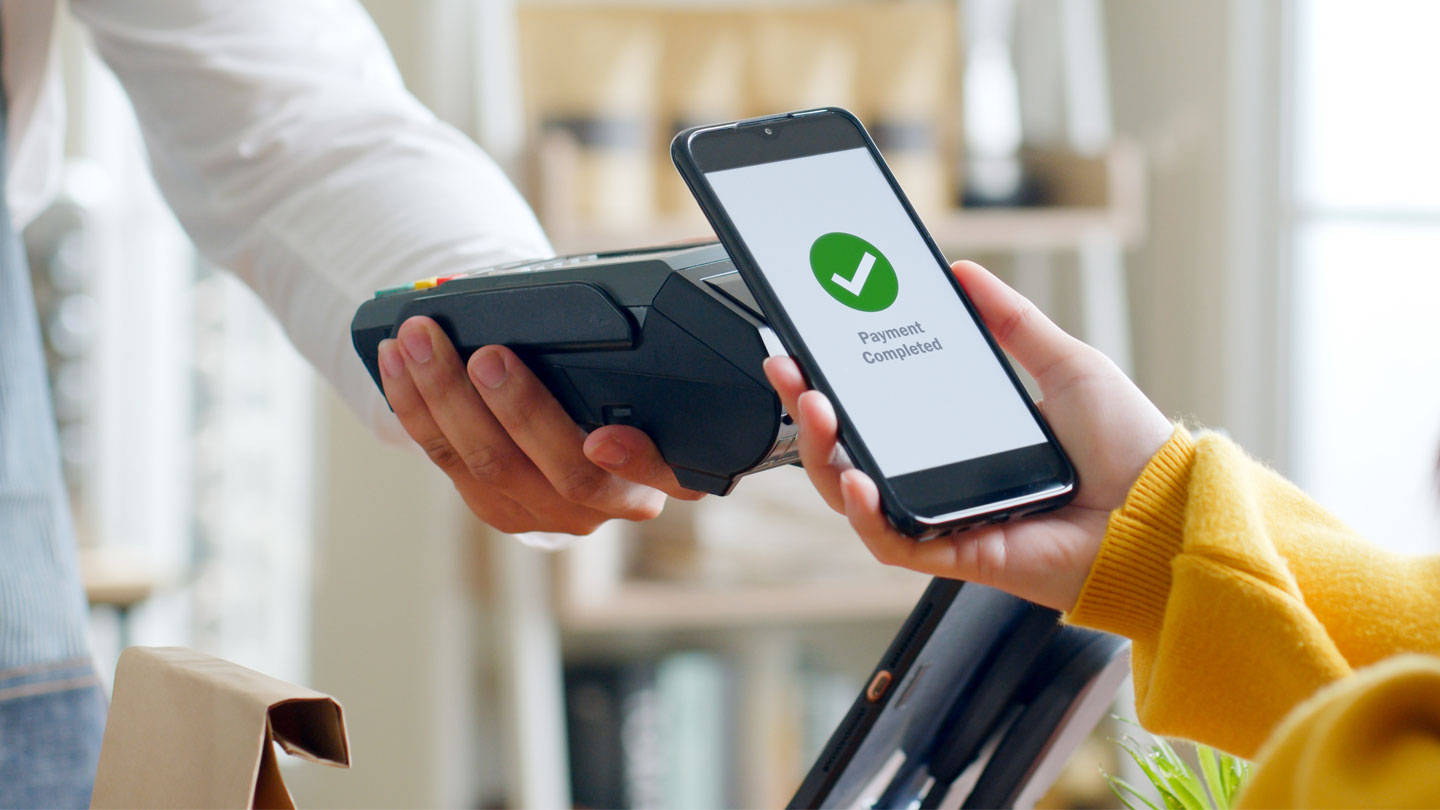
The global pandemic sparked one of the largest periods of rapid digital transformation, achieving what was expected to take years in as little as a few weeks or months. Though nearly all major retailers already had an online presence and consumer packaged goods (CPG) brands were experimenting with direct-to-consumer (D2C), they doubled down on these efforts. From customer experiences and supply chains to treasury and payments functions, digital-first business models became priority for everyone.
The pandemic upended the flow of goods and services, and 94 percent of Fortune 1000 companies experienced supply chain disruption1. Retailers of all sizes needed to ramp up their digital presence or risked going out of business, and consumers quickly shifted their shopping behaviors online2.
Manish Jain
GLOBAL HEAD FOR CONSUMER & RETAIL INDUSTRIES
Amidst this digitization, corporate treasury departments enabled new, digital forms of commerce for their consumers and suppliers—including real-time payments, digital wallets and buy now pay later (BNPL). Now treasury and payments teams realize the critical importance of an agile and modern payments infrastructure for survival during uncertain times and to thrive in the future. Businesses are riding this momentum to continue building the future of payments and shopping. Here are five ways shopping is evolving:
Real Time
The future of shopping is real time
Consumers prefer brands that provide on-demand access to goods and services. According to the Retail Industry Leaders Association (RILA), for example, more than 90 percent of consumers expect two- to three-day delivery as the norm, while 30 percent expect same-day delivery.3 Payments are a big part of this immediate, seamless and secure shopping experience—and now, retailers have options to enable faster payments for all counterparties involved.
90%
of consumers expect two- to three-day delivery3
30%
of consumers expect same-day delivery3
Payments must be connected
To realize a future of shopping that’s real time, payments must be connected. Businesses need the capabilities to collect, allocate and use cash and manage supply chains with enhanced speed, efficiency and control.
-
A global payments brand that supports online money transfers teamed with J.P. Morgan to deliver real-time payments to its users so they could instantly transfer money between eligible accounts.
-
Real-time payment (RTP) services, like Request for Pay, enable faster payments between businesses—30 seconds or less—as opposed to a week, which is more common with traditional paper-based methods.
Payments have become part of the ecosystem for every business. Whether it's customer experience, whether it's security, whether it's customer loyalty, payments have been integral.
Laura Miller
President, J.P. Morgan Merchant Services
Contextual
The future of shopping is contextual
Digital technology has made it easier for businesses and consumers to directly connect, interact and transact. Hence the proliferation of digital-first business models like direct-to-consumer, online marketplaces and contextual commerce. In fact, more than 60 percent of J.P. Morgan’s clients globally indicated that enabling business model shifts was the top treasury priority in 2021.4 Within this digital-first environment, though, businesses need to consistently deliver timely, relevant and personal value to their customers—any time, any place.
60%
of J.P. Morgan’s clients globally indicated that enabling business model shifts was the top treasury priority in 2021.4
Payments must be scalable
To build a future of shopping that is contextual, payments must be scalable. Businesses should leverage end-to-end payment solutions to reduce the complexity of connecting and transacting with consumers in new and personalized ways.
-
Contactless payments and tap-to-pay solutions make the payment experience virtually invisible across your customer touchpoints—creating a more immediate, seamless and secure experience for your customers.
-
Stored value wallets offer a digitized way for sellers to create a payments ecosystem that provides stored value functionality and new ways to interact with customers, including loyalty programs.
Payment model shifts are creating opportunities for clients to reach new sales and new segments of clients, but it's also creating some diversity of how treasury has to manage cash positions and liquidity.
Martha Beard
North America Head of Receivables and Public Sector, J.P. Morgan
Data Driven
The future of shopping is data-driven
Customer journeys provide valuable insights that brands can use to achieve and grow their competitive advantage. Data collected on customer interactions across online, mobile, in-app and in-store can be used to achieve business objectives like improving the user experience, bolstering core sales activities or unlocking new monetization opportunities. For instance, transaction data and purchase history can be leveraged to create personalized offers that enhance the consumer experience, promote loyalty and increase life time value. In fact, according to McKinsey research, businesses that invest in data analytics often achieve up to 10 percent sales growth.5
10%
sales growth in businesses that invest in data analytics5
Payments must be informed
To successfully enable a future of shopping that is data-driven, payments must be informed. Businesses need the ability to monitor, benchmark and optimize their processes, while growing their wallet and market share.
-
While some businesses try to model consumer behavior to give estimates and approximations, working together with a bank empowers retailers with acquiring and card issuing data that can be layered in with their own data. Ultimately this creates a more robust dataset for deeper engagement with customers.
-
Virtual account management (VAM) helps retailers build robust data assets around their omnichannel capabilities—providing granular reporting (e.g., store level, regional, etc.) for stronger decision making and the chance to deepen consumer relationships.
"There is a lot of very valuable information about customer behavior in payments data… We understand in great detail where customers shop, when they shop, how far they are traveling to a shop."

Tony Wimmer
Head of Analytics & Insights, J.P. Morgan Payments
Global
The future of shopping is global
Cross-border transactions are expected to grow from $29 trillion in 2019 to around $39 trillion by 2022.6 Borderless e-commerce, cross-border B2C payments and web-centered businesses are driving this push. However, as e-commerce removes physical barriers to a global customer base, navigating local rules and regulations is becoming more complex. Retailers need to find ways to reduce the cost, complexity and risk associated with serving customers in countries around the world.
$39T
Cross-border transactions are expected to grow from $29 trillion in 2019 to around $39 trillion by 2022.6
Payments must be cross-border
To remain competitive in a global shopping experience, payments must be cross-border. Businesses need solutions that simplify and optimize their cross-border payments, cash management and supply chains.
-
Cross-currency solutions that fit into your existing treasury workflows help retailers with a robust global footprint pay their vendors across the supply chain in their currency of choice.
-
Open banking provides opportunities for sellers across the globe to serve customers better within their digital ecosystem—like enabling consumers to buy a product or service in their own currency.
The opportunities to shop—and the need to make safe, instant payments—will soon be everywhere. That’s why we are constantly updating and innovating our payments capabilities to provide our clients with an optimal payments solution.
Basil Bailey
J.P. Morgan Merchant Services
Experiential
The future of shopping is experiential
Consumers prefer to experience the benefits of goods and services without the burden of ownership. Not to mention consumers also consider the impact of owning versus renting during their purchasing decisions, as demand for more sustainable goods and services increase. Fifty-five percent of the growth in the consumer goods market stemmed from sustainability-marketed products, despite those products only accounting for 16 percent of the market.7
55%
of the growth in the consumer goods market stemmed from sustainability-marketed products7
Payments must be seamless
To make a future of shopping that is experiential, payments must be seamless. Businesses need to enable effortless, intuitive and uniquely rewarding customer experiences that produce enduring revenue streams.
-
Solutions like WePay from J.P. Morgan helps retailers integrate core payment functionality into the checkout process, which makes paying for goods and services a part of the experience.
-
APIs solutions provide retailers with agile and flexible capabilities that easily integrate within existing treasury and payments processes, and help create the seamless payment experiences that consumers want.
The payments ecosystem of the future is becoming more real time, global, embedded and seamless. In fact, customers won't realize they're making payments because it's going to become so frictionless in the experience and that's a good thing.
Jeremy Balkin
Global Head of Innovation and Corporate Development, J.P. Morgan
What’s in store for the retail industry?
Read the latest global research on holiday shoppers’ spending habits, online shopping statistics and what the future looks like for consumers.
Building the future of shopping
As retailers and CPG brands continue digitizing the way they do business, the future of shopping and payments will continue to evolve. Those who embrace the transformation stand to create a more resilient and competitive business.
“Payments sit at the center of this transformation. The ability to accept any payment at any time from your consumers, manage those funds and pay your suppliers are no longer ‘nice to haves’; it’s a matter of survival,” said Angela Martin, Head of U.S. Strategic Partnerships Group at J.P. Morgan. “However, if payments are not your core business, it’s nearly impossible to do it alone. On your journey, selecting the right partners from the beginning is critical to your success.”
As an industry leader who not only understands the consumer shopping and payments, but also actively invests in innovation and the capabilities to help businesses win in a digital world, J.P. Morgan is committed to supporting you every step of the way.
Connect with your J.P. Morgan representative to find the right solution for your business.
References
Not all products and services are available in all geographic areas. Eligibility for particular products and services is subject to final determination by JPMC and or its affiliates. This material does not constitute a commitment by any JPMC entity to extend or arrange credit or to provide any other products or services and JPMC reserves the right to withdraw at any time. All services are subject to applicable laws, regulations, and applicable approvals and notifications.
The views and opinions expressed herein are those of the author and do not necessarily reflect the views of J.P. Morgan, its affiliates, or its employees. The information set forth herein has been obtained or derived from sources believed to be reliable. Neither the author nor J.P. Morgan makes any representations or warranties as to the information’s accuracy or completeness. The information contained herein has been provided solely for informational purposes and does not constitute an offer, solicitation, advice or recommendation, to make any investment decisions or purchase any financial instruments, and may not be construed as such.
JPMorgan Chase Bank, N.A. Member FDIC.
JPMorgan Chase Bank, N.A., organized under the laws of U.S.A. with limited liability.







